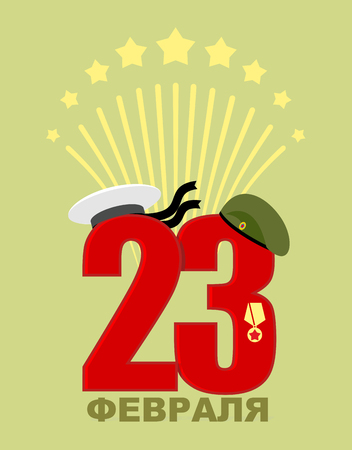1. Understanding the Wheel of the Year
Step gently into the ancient landscape of Britain, where rolling mists curl across green hills and age-old stones stand as silent witnesses to the dance of time. The Wheel of the Year is more than a calendar; it is a living, breathing spiral that connects us to the heartbeat of the earth beneath our feet. Rooted in pre-Christian traditions and woven through with Celtic and Anglo-Saxon wisdom, this sacred cycle honours eight pivotal festivals—each marking a threshold, a turning point in nature’s eternal rhythm.
In ancient Britain, people lived by the land and watched the subtle shifts of sun and shadow with reverence. The Wheel offered a compass, guiding communities through seasons of growth and rest, light and dark. Every festival was a pause—a soulful gathering to give thanks, invoke blessings, and remember our place within the great tapestry of existence. By attuning ourselves to these cycles today, we awaken a sense of belonging that bridges past and present, mundane and mystical.
Celebrating the Wheel of the Year invites us into an intuitive relationship with time itself. It whispers of ancient fires lit on windswept moors, songs rising at dawn, and hands joined around harvest tables. Here, spirituality is not distant or abstract—it is woven into wildflowers blooming at Beltane and the hush of winter solstice nights. As we journey through each turning, we discover that to honour these seasonal gateways is to remember the sacredness in every moment and every breath.
2. Samhain: The Celtic New Year and the Veil Between Worlds
As the golden leaves fall and mists creep across ancient British landscapes, the Wheel of the Year turns to Samhain—a festival woven deeply into the soul of these isles. Rooted in Celtic tradition, Samhain (pronounced “sow-in”) marks not only the end of harvest but also the beginning of a new year. This pivotal festival, traditionally celebrated from dusk on 31 October to dusk on 1 November, is a threshold moment: a time when the veil between worlds grows thin and whispers from our ancestors drift upon the autumn wind.
Samhain’s spiritual essence lies in honouring endings and beginnings. The Celts believed that during this liminal time, boundaries separating the seen and unseen dissolve. Spirits of departed loved ones, nature beings, and ancient deities move freely amongst us, bringing both blessings and cautionary tales. In villages shrouded by swirling fog, families would set an extra place at their supper table or leave food outside as offerings—gestures inviting ancestral guidance and protection for the months ahead.
The Mystical Roots of Samhain
Samhain’s mystical roots echo through Britain’s sacred sites—stone circles like Avebury and misty hill forts where fires once blazed through the night. These fires were more than warmth; they symbolised light amidst darkness and hope through the coming winter. Divination practices flourished: apples bobbed in water for fortune-telling, hazelnuts cracked open to reveal secrets, while young people gazed into mirrors by candlelight seeking glimpses of their future beloveds.
Customs Bridging Past and Present
Though centuries have passed since druids walked these lands, many British customs today carry echoes of Samhain’s spirit:
| Ancient Samhain Customs | Modern British Traditions |
|---|---|
| Bonfires to ward off evil spirits | Community bonfire nights & Guy Fawkes Night |
| Leaving food for wandering souls | Trick-or-treating and sharing sweets |
| Masks to disguise from mischievous fae | Halloween costumes & spooky gatherings |
| Telling stories of ancestors around hearths | Remembrance rituals & All Souls’ Day observances |
The Enduring Spirit of Remembrance
In Britain today, as pumpkins glow on doorsteps and children parade as witches or wizards through neighbourhood lanes, we still touch that timeless threshold. Lighting candles for those who have gone before us, we weave their memory into our present lives—acknowledging grief yet celebrating continuity. Samhain teaches that every ending births a new beginning; through cycles of darkness and renewal, the wisdom of our ancestors endures in every flame kindled against the autumn chill.

3. Yule: Midwinter Magic and the Return of the Light
As the Wheel of the Year turns deep into winter, the ancient festival of Yule emerges from the frosty heart of the British landscape. Rooted in a time when night seemed to stretch endlessly and the sun’s warmth was but a distant memory, Yule was a beacon of hope—a communal promise that light would indeed return. The forebears of these lands gathered around crackling fires, weaving stories and songs that called forth the sun’s rebirth, seeking solace and connection in the midst of darkness.
The Hearth as Sacred Centre
In centuries past, the hearth held spiritual significance far beyond its practical warmth. Families huddled close, honouring ancestral spirits and inviting blessings for the months ahead. The ritual burning of the Yule log, hewn from sacred wood and anointed with seasonal greenery, was believed to protect against misfortune and ensure abundance. Embers from last year’s log were carefully preserved to kindle this year’s fire—a thread of continuity binding generations together.
Mystical Symbols and Traditions
Many familiar festive customs echo these ancient rites. Evergreen holly and ivy adorned homes as talismans against winter’s chill, their vibrant green a reminder of life’s persistence even in the coldest season. Wassailing—singing to orchards and trees—invoked fertility for the coming year, while feasting served not only as celebration but also as an act of magical sustenance, feeding both body and spirit.
The Quiet Promise of Light
Yule’s mystical roots run deep beneath British soil. It is more than mere festivity; it is an invitation to pause, reflect, and trust in nature’s rhythm. Even now, when city lights outshine starlit skies, there remains a quiet yearning for renewal at midwinter—a collective remembering that after every longest night, dawn always returns. The magic of Yule whispers through our traditions, calling us home to ourselves and to each other as we journey toward the returning light.
4. Imbolc: Emerging Light and Celtic Inspiration
As winter’s chill lingers in the air and frost still silvers the hedgerows, Imbolc arrives as a gentle whisper of hope in the ancient British calendar. Traditionally marked on the 1st or 2nd of February, this festival stands at the threshold between the darkness of winter and the subtle return of light, reflecting a quiet but powerful awakening within the cold earth. The name ‘Imbolc’ is believed to derive from Old Irish, meaning “in the belly,” alluding to pregnant ewes and the promise of new life stirring beneath the surface.
The Blessing of Brigid
Central to Imbolc’s mystical heart is Brigid, revered as both a Celtic goddess and Christian saint in British lore. She embodies fire, healing, poetry, and inspiration—a beacon for those seeking creativity and renewal. Her presence is evoked through rituals such as weaving Brigid’s crosses from rushes, lighting candles to banish winter’s gloom, and crafting ‘Bride dolls’ as symbols of fertility and protection for the coming year. Across Britain, especially in rural communities, these customs persist as living echoes of ancient reverence.
Imbolc Traditions in Britain
| Tradition | Description | Mystical Significance |
|---|---|---|
| Brigids Crosses | Handwoven from reeds or rushes; displayed in homes | Protection against evil and fire throughout the year |
| Candle Lighting | Candles or fires lit at dusk | Welcoming returning light; invoking inspiration |
| Blessing Wells & Springs | Visiting sacred waters; leaving offerings | Cleansing, healing, connecting with Brigid’s spirit |
| Bride Doll Making | Dolls made from corn husks or cloth | Symbolises fertility and new beginnings |
The Quiet Promise of New Beginnings
Imbolc does not arrive with fanfare or spectacle; instead, it whispers encouragement to those attuned to nature’s rhythms. In gardens and woodlands across Britain, snowdrops—known as ‘Candlemas bells’—pierce through frozen soil, heralding hope. It is a time for reflection by the hearthside, setting intentions for creative projects or personal growth. Imbolc invites us to honour both our inner spark and the land’s subtle awakening, reminding us that even in the deepest winter, transformation is quietly underway.
5. Beltane: May Day’s Fire and Fertility
As April gives way to May, the air in the British Isles shimmers with an ancient anticipation—Beltane arrives, marking the halfway point between spring equinox and summer solstice. The old Celts kindled bonfires atop windswept hills, believing their flames would cleanse, protect, and invite abundance. Even today, echoes of those luminous nights flicker through British villages, where communities gather for May Day revelry that is both playful and profound.
The Dance of the Maypole
The iconic Maypole, adorned with ribbons in every colour of the rainbow, stands at the heart of Beltane festivities. Young and old join hands, weaving intricate patterns as they circle the pole—a living tapestry symbolising unity and the interlacing energies of life. This joyous dance invokes the fertile spirit of Beltane, awakening the land after winter’s slumber and calling forth blessings for crops, families, and the wider community.
Bonfires: Sacred Flames of Renewal
After dusk, bonfires are lit in fields and on village greens, their sparks leaping skyward like prayers. Couples leap over the embers hand-in-hand, a tradition believed to ensure luck and fertility for the coming year. For centuries, these flames have been seen as a bridge between worlds—a way to honour ancestors and nature spirits while inviting transformation into daily life.
Awakening Love and Growth
Beltane is not just about outward celebration; it is also a mystical threshold where nature’s pulse quickens and hearts open to possibility. In every blossom and birdsong is a reminder that love—whether romantic or communal—is a force of creation. As hawthorn blooms along hedgerows and bluebells carpet ancient woodlands, there is a collective sense that Britain herself stirs awake, ready to embrace growth, passion, and new beginnings.
Through these rituals—dancing round maypoles, leaping flames, sharing laughter beneath blossoming trees—the British people have kept alive an exuberant spirit of renewal. Beltane weaves together past and present, inviting us all to celebrate life’s unfolding mysteries with joy and reverence.
6. Lammas: Harvest Mysteries and Autumn Gratitude
As the golden blush of late summer graces the British fields, Lammas—also known as Lughnasadh—marks the first grain harvest in the Wheel of the Year. This ancient festival, rooted in both Celtic and Anglo-Saxon traditions, invites us to gather beneath wide skies and honour the mystical relationship between land, people, and sustenance.
The Sacred Art of Reaping
In villages scattered across England, Scotland, and Wales, Lammas was once a time when sickles flashed through ripening wheat and barley. The first sheaf cut was not merely food; it was an offering, a living symbol of gratitude to the land spirits and old gods who nurtured each seed. To this day, echoes of these rites linger in countryside customs—the sharing of fresh bread, corn dollies woven by loving hands, and communal gatherings where stories flow as freely as cider.
Giving Thanks: A Magical Practice
Lying at the heart of Lammas is the practice of thanksgiving. Not just for abundance received but for the promise of more to come. In homes scented with baking loaves, families pause to acknowledge what has blossomed through their efforts and what has arrived by grace alone. This mindful gratitude weaves subtle enchantment into daily life, transforming each meal into a sacred act and every grain into a reminder of nature’s perpetual generosity.
Abundance Woven Into British Life
The harvest mysteries are not confined to history or rural fields. Even in bustling towns or city gardens, modern Britons can attune to Lammas energies by sharing food with neighbours, supporting local farmers’ markets, or simply pausing to notice the turning year. The spirit of Lammas asks us: How do you celebrate your own harvests? What richness can you share? By embracing these questions, we participate in an age-old dance—one that honours both our ancestors and the living land beneath our feet.
7. Living the Wheel: Contemporary Reverence for Ancient Rhythms
The ancient turnings of the Wheel of the Year are not relics locked away in dusty folklore—they are living, breathing presences woven into the fabric of contemporary British life. Across moor and meadow, city and suburb, people are rediscovering these old rhythms, infusing daily existence with the wisdom of ancestors who once danced around fires and marked the seasons beneath vast, ever-changing skies.
Reawakening Old Magic in Modern Times
Today’s Britain finds itself at a crossroads where heritage meets innovation. In quiet corners of London parks, rural glens in Scotland, and along windswept Welsh coastlines, communities gather to welcome solstices, equinoxes, and cross-quarter days—each festival an invitation to pause, reflect, and reconnect. These celebrations might look different from those of our forebears—perhaps a yoga class at dawn on Beltane or handfasting ceremonies amidst bluebells—but their spirit endures. The Wheel’s mysteries become touchstones for those seeking meaning in a fast-paced world, offering space for ritual even in everyday moments.
Urban Hearths and Digital Circles
In bustling cities like Manchester and Bristol, ancient traditions find new expression among diverse groups. Pagan moot meetings echo the sacred groves of old; online gatherings link kindred spirits across counties and continents. Social media platforms brim with creative interpretations—from eco-conscious Imbolc candle crafts to Samhain ancestor altars glowing on Instagram feeds. The virtual realm becomes another sacred space, fostering connection and community for those drawn to nature’s turning wheel.
A Legacy of Belonging
For many Britons, honouring the Wheel is less about rigid dogma than heartfelt belonging. The festivals offer opportunities to ground oneself—to plant seeds at Ostara, share harvests at Lammas, or simply watch winter’s first snow fall in silent wonder at Yule. Schools teach children about these ancient customs alongside scientific explanations of solstices and equinoxes, blending knowledge with reverence. Artists, writers, and musicians draw inspiration from seasonal cycles, keeping ancestral stories alive through song and story.
In this weaving of past and present lies a quiet revolution—a gentle reclaiming of rhythm and relationship with land. The Wheel of the Year continues to turn beneath British skies as it always has; its roots reaching deep into the heart of modern culture, reminding us that we too are part of nature’s timeless dance.


